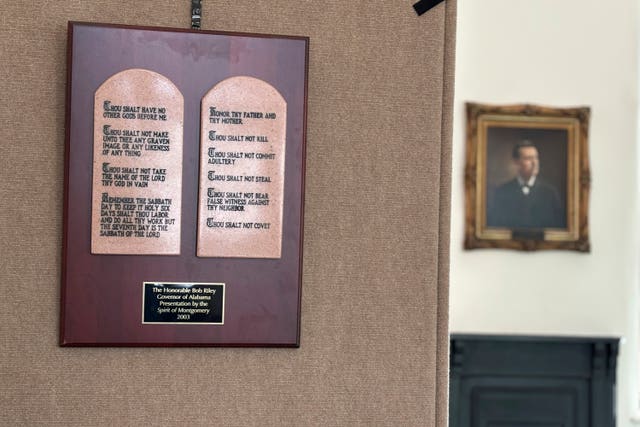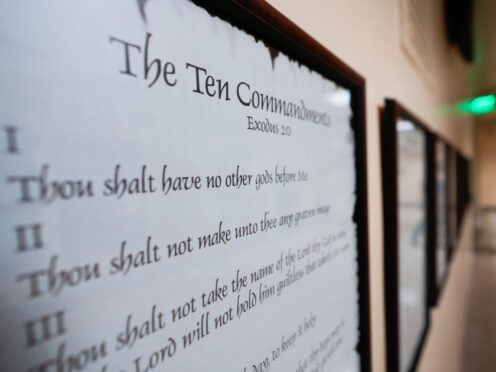Civil liberties groups have filed a lawsuit challenging Louisiana’s new law that requires the Ten Commandments to be displayed in every public school classroom.
Opponents of the measure, which was signed into law by Republican governor Jeff Landry last week, had long warned of an impending lawsuit to fight the legislation that they say is unconstitutional.
Plaintiffs in the suit include parents of Louisiana public school children, the American Civil Liberties Union, Americans United for Separation of Church and State, and the Freedom From Religion Foundation.
Under the new law, all public K-12 classrooms and state-funded universities will be required to display a poster-sized version of the Ten Commandments in “large, easily readable font” next year.
Opponents argue that the law is a violation of separation of church and state and that the display will isolate students, especially those who are not Christian.

Proponents say the measure is not solely religious, but that it has historical significance. In the language of the law, the Ten Commandments are “foundational documents of our state and national government”.
The Ten Commandments has long been at the centre of lawsuits across the nation.
In 1980, the US Supreme Court ruled that a similar Kentucky law violated the establishment clause of the US Constitution, which says Congress can “make no law respecting an establishment of religion”.
The high court found that the law had no secular purpose but rather served a plainly religious purpose.
In a more recent ruling, the Supreme Court held in 2005 that such displays in a pair of Kentucky courthouses violated the Constitution.
At the same time, the court upheld a Ten Commandments marker on the grounds of the Texas state Capitol in Austin. Those were 5-4 decisions, but the court’s make-up has changed, with a 6-3 conservative majority now.
Other states, including Texas, Oklahoma and Utah, have attempted to pass requirements that schools display the Ten Commandments. However, with threats of legal battles, none has the mandate in place except for Louisiana.
The posters in Louisiana, which will be paired with a four-paragraph “context statement” describing how the Ten Commandments “were a prominent part of public education for almost three centuries”, must be in place in classrooms by the start of 2025.
The controversial law, in a state ensconced in the Bible Belt, comes during a new era of conservative leadership in Louisiana under Mr Landry, who replaced two-term Democratic governor John Bel Edwards in January.
The Republicans holds a super-majority in the Legislature, and the party hold every statewide elected position, paving the way for lawmakers to push through a conservative agenda.
